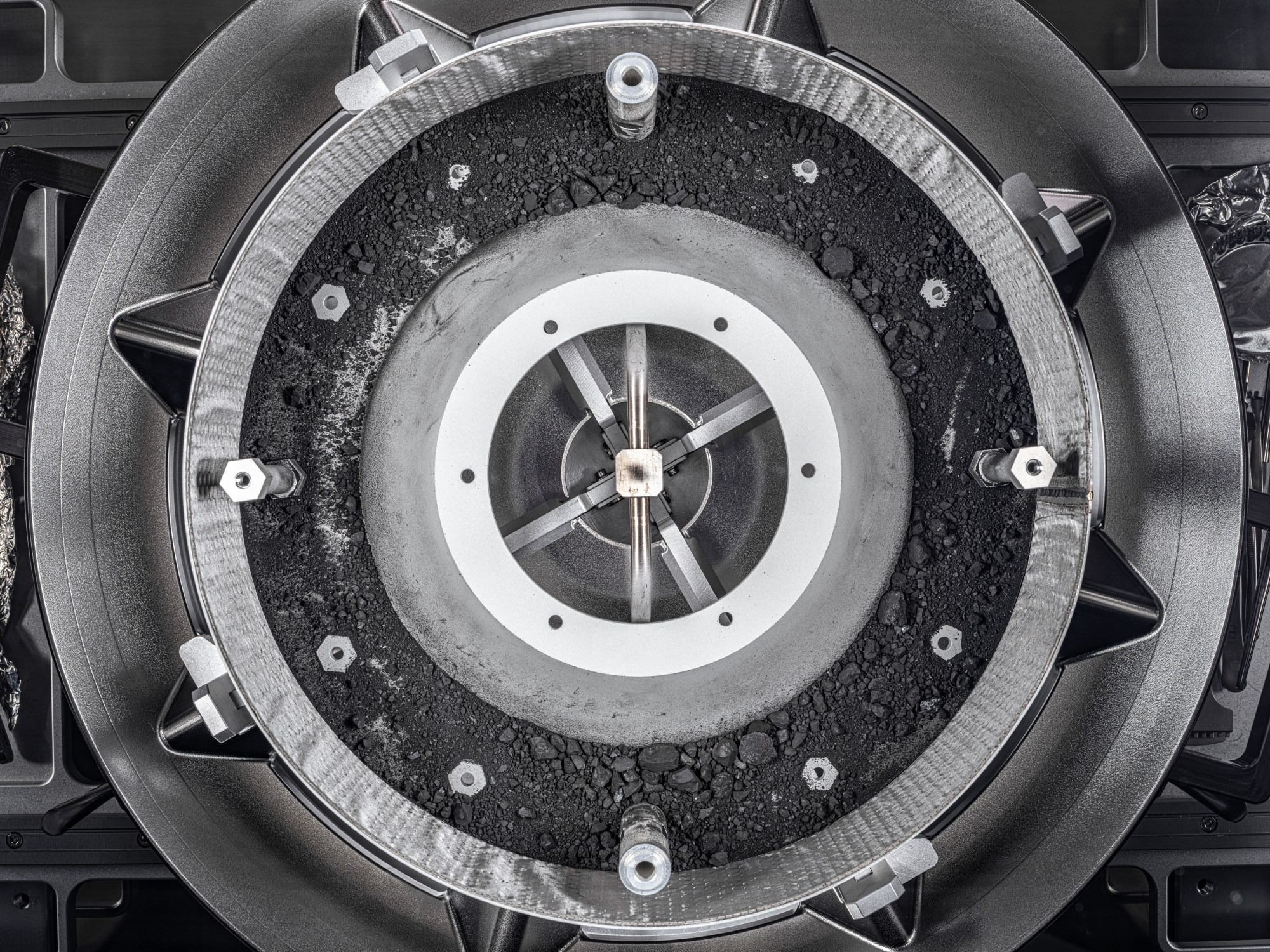NASA’s OSIRIS-REx spacecraft delivered a valuable cargo with a sample of the asteroid Bennu to Earth on September 24, 2023. The sample is located at NASA’s Johnson Space Center in Houston. The team of curators has already started unpacking and studying the collected material.

The sampling head, which contained the sample, could not be opened for a very long time due to a problem with two fasteners that prevented engineers from reaching most of the samples. Finally, we have the opportunity to look at valuable samples of cosmic rock – this asteroid material has existed for billions of years since the formation of the Solar System. Scientists are already waiting for opportunities to study this material in detail, which can reveal the secrets of the origin of life on Earth.
The curators began the process of studying the sample on January 10, uncovering the TAGSAM sample collection mechanism. The sample was weighed and photographed before the start of its study. The final mass of the sample will be determined within the next few weeks. The blocked OSIRIS-REx sample is the largest that has ever been delivered to Earth from an asteroid. The 70.3 grams of material taken indicate a high carbon content, which makes it a valuable object for research.
The team of curators plans to catalog the samples this year, and after that, scientists will be able to submit requests for access to them. The material will also provide an opportunity for scientists to improve spacecraft instruments and remote sensing methods based on comparison with previous observations.
Bennu is a carbonaceous asteroid. It may contain information about the formation of not only the asteroid itself, but also the entire Solar System. With water and carbon content, it may even contain the building blocks of life, such as amino acids.
Bennu’s samples will help scientists uncover the secrets of the Solar System’s distant past and complement our understanding of its evolution. This asteroid may also turn out to be one of the remnants of a larger object that disintegrated billions of years ago. The preservation of 75% of the sample for future research demonstrates the importance of this study for science and the development of our understanding of the Solar System.
Earlier, we showed a stereoscopic photo of samples from the OSIRIS-REx mission.
According to NASA
Follow us on Twitter to get the most interesting space news in time
https://twitter.com/ust_magazine


